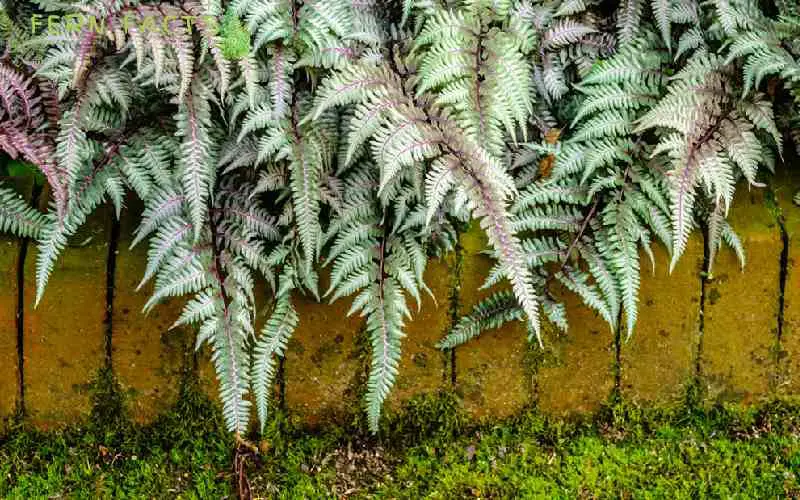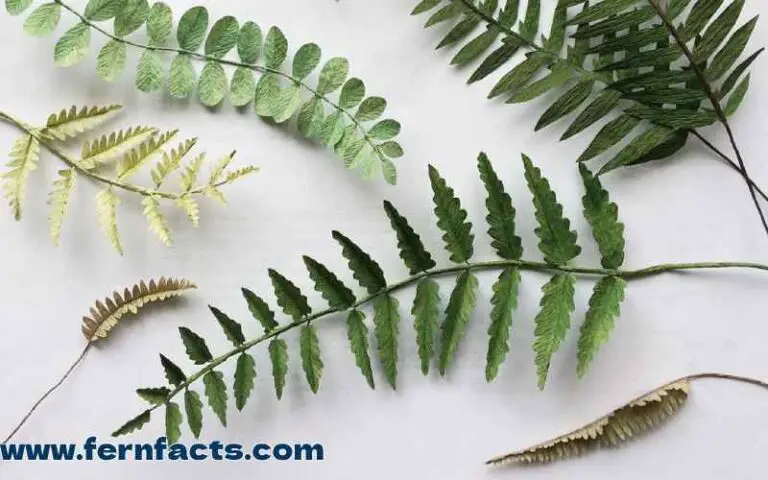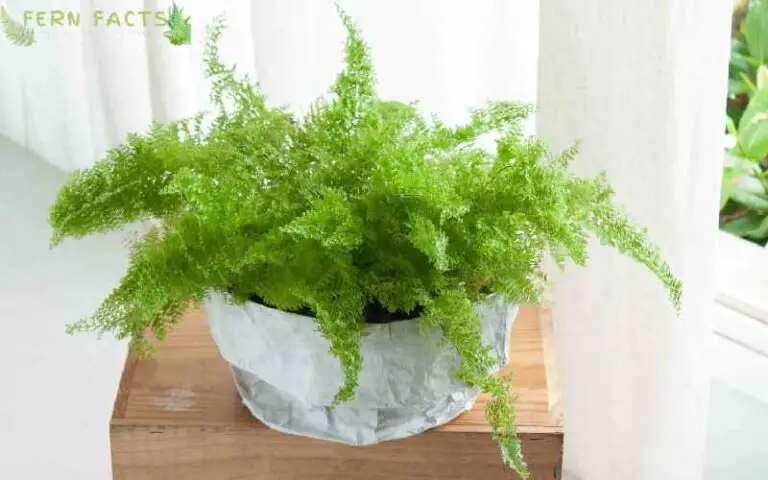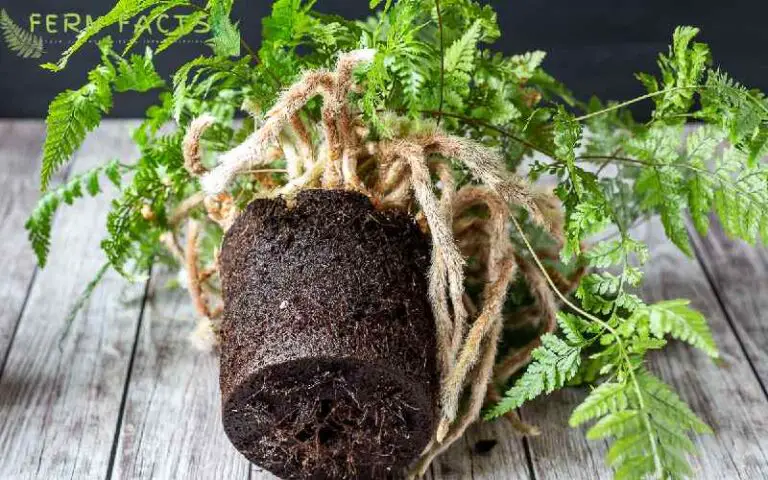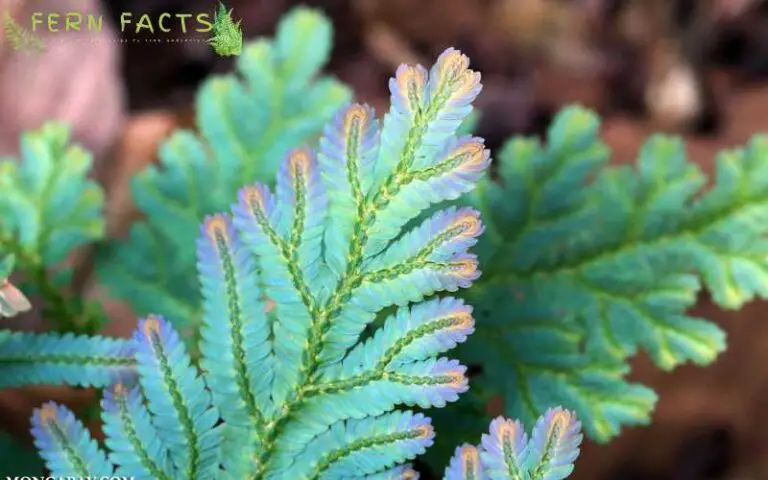How to Plant and Grow Japanese Painted Fern
Japanese-painted ferns are the most beautiful ferns with colored foliage. They have a variety of coloration in their fronds which outshine the garden look with other greenery foliage.
If you are thinking about having a Japanese Painted Fern in your garden, then this article will guide you in depth. Therefore, in this article, I will give a brief idea about Japanese Painted Ferns along with an overview and other details.
Later on, I’ll illustrate how you can supervise these ferns to get a thriving look at them in your garden. So let’s explore the topic briefly.
Overview of a Japanese Painted Fern
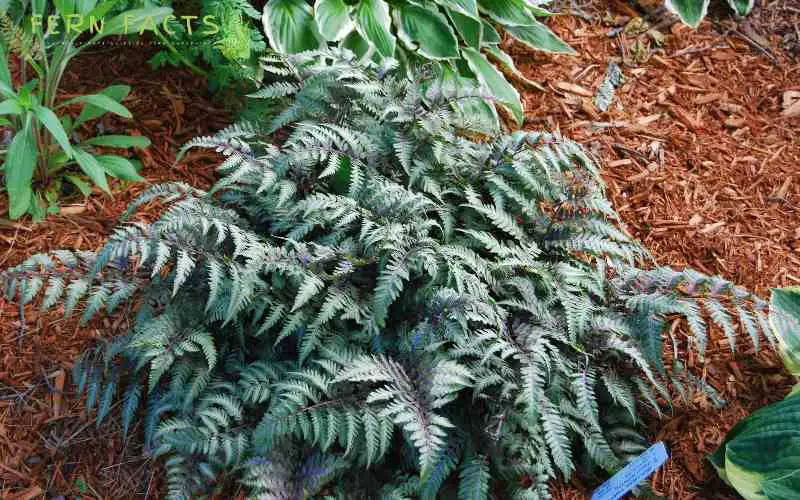
- Botanic name: Athyrium niponicum
- Common name: Japanese Painted fern
- Native range: Eastern Asia
- Family: Polypodiaceae
- Plant type: deciduous perennial
- Size: around 1-3 ft tall, 1-2 ft wide
- light: bright and indirect sunlight or partial sunlight
- Soil: neutral acidic, alkaline, moist well drained
- Foliage color: gray, purple, silver
- Humidity: 40-60
- Temperature: 50- 80 F
- USDA zone: 4,5,6,7,8,9
- Fertilizer: yearly repotting, rich in nutrients
- Propagation: root divided
- Pet & diseases: snails, slugs
- Toxicity: not toxic
Japanese painted ferns are known for their silver foliage fronds which give unique coloration in the garden. Resembling its name, its unique coloration such as purple, silver, and burgundy color is thoroughly eye-catching.
All About Japanese Painted Ferns
Japanese painted ferns belong to the Polypodiaceae family with beautiful color-coordinated foliage in an arching habit.
These ferns are mostly local to eastern Asia. They have variable colorful foliage usually 30 to 75 cm long. Usually, fronds of these ferns have variable colored foliage like white, frosty white, or burgundy.
For your garden, these Japanese-painted ferns would be the best option because of their color and intricate texture.
These ferns need alkaline, neutral acidic soil which will help them to grow actively. Later on, these ferns also prefer a cold humid atmosphere with moist soil.
Similarly, they are highly intolerant of direct sunlight, which is why they need partial or fully shaded places to grow and develop.
Types of Japanese Painted Ferns
You need to know that this fern has variable species, not just one. So you can have multiple variations of these Japanese painted ferns which will give your garden a colorful appearance in different seasons.
Wildwood twist: just like the name, these fronds of silver-gray color which have a twisted appearance. They are slightly taller.
Burgundy Lace: these ferns have burgundy stems and the color repeats in striations on the fronds.
Pictum: These ferns have an attractive color combination of silver and red fronds.
Where to Plant Japanese Painted Ferns
As I have already mentioned, these Japanese-painted ferns are hardy in zones between 4 to 9. Therefore, they are often planted in the woodlands, gardens, near lakes ponds or streams.
To enhance their appearance in your garden, you can plant these ferns in groups. They look magnified in groups by distributing color variations to the eyes.
Similarly, you can plant these ferns where you can protect them from harsh afternoon sunlight rays or excessive rain. Therefore, choose an area or location with well partial shade and drained soil.
How and When to Plant Japanese Painted Ferns
Now let’s talk about when and how you can plant your Japanese-painted ferns in your garden. Well, the most demanding or blooming seasons are in the fall or spring seasons.
As these are their growing seasons, that’s why you can plant them in between fall and summer. Therefore, you need to make the soil before planting your ferns, at least two weeks ahead.
It’s because the soil’s microorganisms could have a chance to reestablish themselves properly beforehand.
Then, you can dig a hole on the ground around two inches wider, so that the root balls get enough space to accommodate. Then place your ferns inside of the hole and fill it with soil.
If you tend to plant more than one ferns, make sure you have a 24 inch gap so that they can get enough space to grow and spread. If you don’t gap them, those ferns won’t spread.
Japanese Painted Ferns Care
Now let’s talk about how ferns are maintained and care for your ferns after being planted. You need to care for and supervise these ferns although ferns are well-determined for low maintenance.
Light
These Japanese-painted ferns prefer full shade or partial shade for themselves. It means a partially bright place or indirect sunlight is the best combination for these ferns to grow.
However, you need to keep in mind that these ferns cannot tolerate full sun, therefore a shaded place is a must for them. They can tolerate some of the morning rays but not the heat of the afternoon sun rays.
Excessive sun exposure can burn out their fronds as well which will make their colored fonds less attractive.
Soil and Water
For mixing the Japanese-painted fern soil, you need to mix soil with rich elements. So, you can choose a soil that is well-drained with all the organic matter present in it.
Therefore, you can choose a soil with a pH level from 5.5 to 7.0. Then you can add some compost in the soil to develop the richness of your soil.
Later when you first plant your ferns, water them thoroughly. Remember that these types of ferns can tolerate drought but excessive dryness can harm your plants.
Therefore, you need to check the soil conditions before applying the water. Try to keep your Japanese fern’s soil moist and well-hydrated so that they can thrive fully.
Similarly, you need to keep your ferns moist and give them more water during winter seasons compared to other seasons like fall and winter.
Temperature and Humidity
One unique adaptability of these ferns is that they can survive below -30 degrees. However, the average or ideal temperature of these ferns is between 55 degrees to 75 degrees Fahrenheit.
These ferns also become dormant during the winter season. so, if you live in a winter-dominant country, then don’t worry! Your ferns will die after the dormant period gradually and again will revive in the spring.
Similarly, these Japanese-painted ferns are fond of 40 to 60 percent humidity around themselves or in the atmosphere. But make sure, the soil doesn’t get too soggy or mushy due to excessive water or humidity.
As these ferns are fond of cold, humid temperatures therefore you can keep a fan near your indoor plants so that the humidity remains in the atmosphere.
You can also place a wet pebble tray which will give them enough moisture and hydration to thrive fully.
Fertilizer
If you already have mixed organic matter or compost during the plantation time, then they will not require that much fertilizer in the upcoming year.
However, you can add chemical fertilizer to the soil with a ratio of 10:10:10 in the spring. It will balance all the properties in the soil and nourish your flowers.
Pruning
Although pruning is not much demand for the japanese painted ferns, still you can trim or -rune the dread fronds or brown fronds from the plants.
Usually, in the spring season they used to have more brown or dead fronds as it’s also their growing season. so you can do a little bit of pruning at that time.
Potting and Repotting
Potting and repotting is another caring tip for you so that you can help them grow and thrive in nature. To repot, you need to choose a pot with a deeper shallow container.
You can choose a pot at least 12 inches in size so that they’ll get proper accommodations to thrive there. Then fill the pot with your new mixer soil with organic compost.
Then, you have to make the division of the main plant and need to ensure that you collect the multiple underground roots when you are dividing. After dividing the ferns, place the divided section in a new pot with a new soil-compost mixture. Later water your Japanese ferns properly.
Additionally, you must fertilize your ferns once a month to dry their growing seasons by following the instructions on the packaging or label.
For choosing the container or pot, you can select a freeze-resistant pot or concrete, fiberglass, metal, or stone material pot for replanting or repotting your Japanese painted ferns. Then locate your pot where your ferns will be safe from direct sun exposure or heavy rain.
However, if you buy a freeze-resistant pot then you will not need to worry about your ferns in the winter seasons or else you don’t need to take them inside during cold seasons.
This type of container will help your plants from freezing in winter or cold weather.
Pests and Diseases
These ferns are not that much attracted to pests. However, you can encounter snails or slugs around your Japanese-painted ferns.
To prevent these problems, you can crush some eggshells and mix them in the soil. Or you can spread the eggshell crushes around the base of your plants.
Similarly, rabbits are quite fond of Japanese-painted ferns fronds. Therefore if you have a rabbit as a pet in your house then you need to be extra careful about your ferns.
Another thing is that these ferns usually get diseases due to rotten roots. It happens Beavis of excessive watering which creates soggy and mushy soil.
This soggy and mushy soil leads them to have fungus diseases. In such cases, you need to report your ferns and have to change the soil immediately.
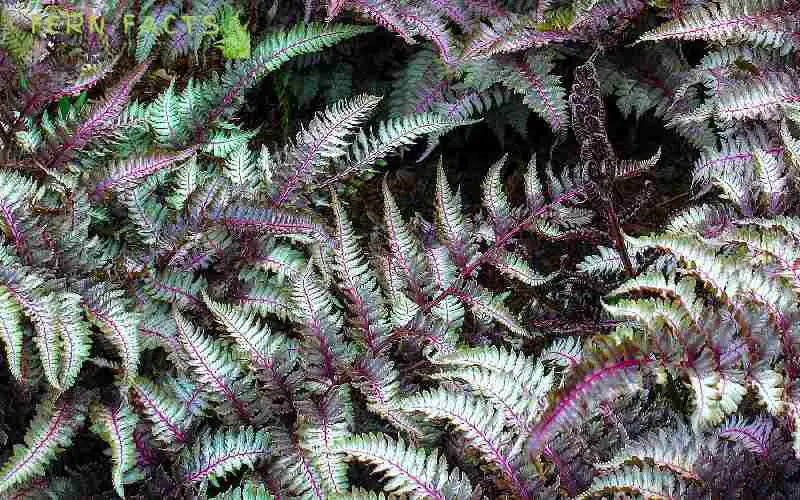
Propagation of Japanese Ferns
You can easily grow multiple plants by division these Japanese painted ferns from roots. These types of ferns can separate themselves through rhizomes. Therefore,
The best time for propagation is in the spring season when they will become mature plants. During that time, you can dig around the plant and take it out from the ground.
You can also wear gloves before propagation which will save you from any injury or harm. After that, try to loosen the soil and divide the roots from the main plants with a trowel or knife.
You also have to ensure each part has the same sort of roots, fronds, and rhizomes. Then you can replant each section into a pot or container or your garden.
For your ground plants, try to give a 24-inch gap from each plant. Later, water your Japanese painted ferns thoroughly which will allow your plants to strengthen their growth.
Conclusion
In short, these Japanese painted ferns are of beautiful colored ferns for any plant enthusiast to have in their garden.
However, their different varieties also have different appearances which will give the garden a magnificent look. Still, by proper care and management, you can use these Japanese painted ferns in your garden.
Read More About How to Care for and Grow: Diplazium Proliferum Fern
Frequently Ask Questions
Are Japanese painted ferns toxic?
No, Japanese ferns are not toxic to humans or any pets.
How long do Japanese-painted ferns live?
Japanese-painted ferns usually can live 10 to 15 years.
How long do Japanese-painted ferns grow in a single year?
These Japanese ferns grow 12 inches per year.
Do these ferns create problems to neighbor plants?
As these ferns tend to be deeply rooted ferns, therefore, their inherited roots might harm neighbor plants. That’s why, try not to plant any plants too close to these ferns, which might harm those plants.
Make sure you have a 24-inch gap from each plant so that they don’t harm any other plants.

